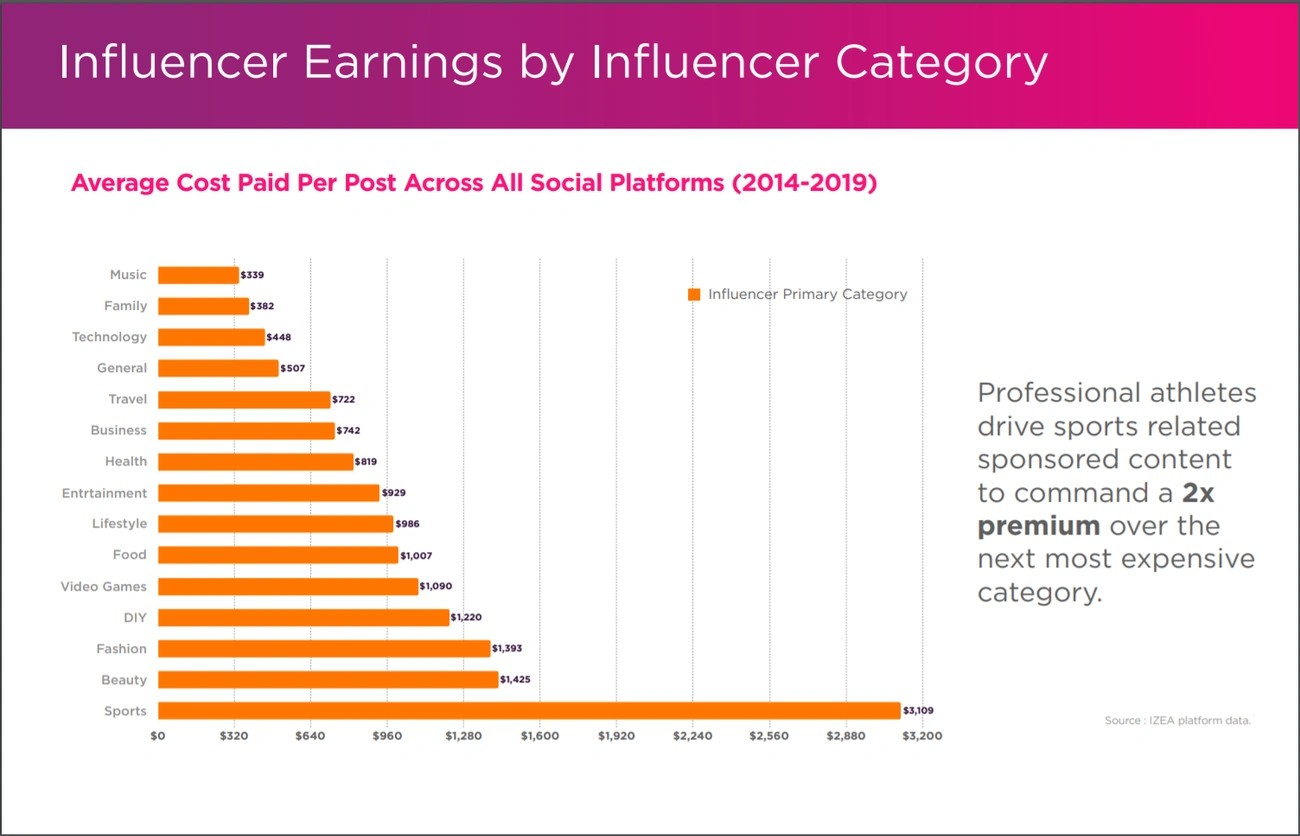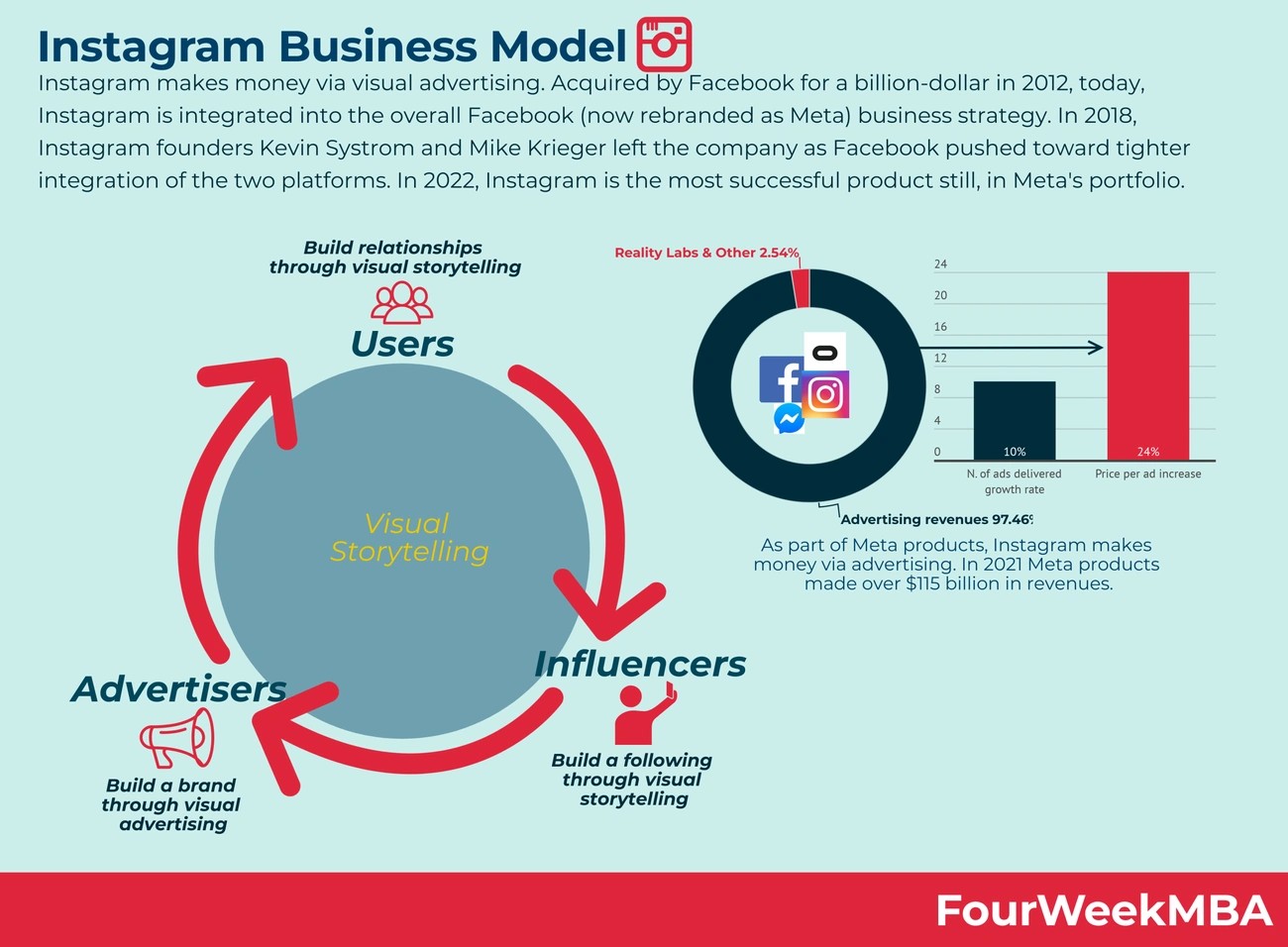The influencer market has exploded into a $250 billion industry in 2025, up from $210 billion last year . So how do these social media stars actually make their money? The answer might surprise you.
Top-tier influencers with 1 million followers can rake in $10,000 to $15,000 for a single Instagram post . But the reality isn’t so rosy for most creators. The creator economy grew by 19.05% since 2024 , yet more than half of content creators earn less than $15,000 annually . Recent data shows 48 percent of creator-earners make $15,000 or less each year .
Instagram influencer earnings paint an interesting picture. Creators with 10,000 to 25,000 followers can expect $100-$250 per post . Someone with 100,000 followers might charge around $1,800 . Most influencers land somewhere between $300 and $2,500 per post . Micro-influencers typically earn on the lower end of that range.
Let’s dive into the details of how influencers get paid based on their follower counts. We’ll explore the most profitable revenue streams beyond sponsored posts and uncover the key factors that determine an influencer’s earning potential in today’s competitive digital world.
The creator economy in 2025: who’s making money
The creator economy shows a clear split between people who’ve made content creation their career and those who create while holding regular jobs. This split affects how creators make content and shapes their money-making potential.
Full-time vs part-time creators
Today’s digital world reveals a clear fact: only 28% of influencers create content full-time, while 72% balance content creation with other jobs. This split affects earning potential by a lot. Full-time creators earn an average of $97,800 annually, while part-time creators make around $38,600 per year.
Experience is a vital factor in income levels. Creators with more than four years of experience earn about $108,100 annually. New creators with less than a year’s experience average just $30,000. These numbers show why staying power matters when building a lasting career in the creator economy.
Creators who want to move from part-time to full-time need multiple income streams. Many successful creators develop digital products like courses or membership programs that offer steadier income than platform-based money-making methods.
Income distribution by follower count
A creator’s follower count remains the main factor in earning potential, though the relationship isn’t always straightforward. The income spread across follower levels shows some interesting patterns:
- Nano-influencers (1K-10K followers): Average $100-$500 per sponsored post
- Micro-influencers (10K-100K followers): Average $500-$5,000 per sponsored post
- Mid-tier influencers (100K-500K followers): Average $5,000-$10,000 per sponsored post
- Macro-influencers (500K-1M followers): Average $10,000-$20,000 per sponsored post
- Mega-influencers (1M+ followers): $20,000+ per sponsored post
All the same, follower count isn’t everything. Engagement rates often matter more than raw numbers. Micro-influencers see engagement rates around 3.86%, compared to 1.21% for those with over 100,000 followers. This explains why brands often prefer working with creators who have smaller but more engaged audiences.
The$15K monetization barrier
The creator economy’s most telling number is the “$15K monetization barrier.” Right now, 48% of creators make $15,000 or less yearly from their content. This number marks where creators either break through to steady income or stay in the hobby category.
Several things create this barrier. Platform algorithms favor a small group of creators, making it hard for newcomers to get noticed. Many creators also find it tough to build different income streams beyond sponsored content and ads.
Creators break through this barrier when they develop ways to make money outside platforms. Tools like Rupa help creators turn their knowledge into digital products without depending on algorithms. Creating courses, challenges, and membership programs helps establish steady income streams.
Creators who cross this threshold build direct connections with their audience. They focus on growing email lists and developing communities. This approach helps them keep their audience connections strong, whatever changes platforms might make.
How much do influencers make on Instagram

Image Source: Digital Information World
Instagram stands out as the go-to platform for influencers who want to make money from their online presence. The money-making potential shows huge differences between tiers. Aspiring creators should know what they can realistically expect to earn.
Average earnings by tier
The money Instagram influencers make follows a clear ranking based on their follower count. Recent data shows these typical earnings:
- Nano-influencers (1K-10K followers): USD 10-100 per post [1]
- Micro-influencers (10K-50K followers): USD 100-500 per post [1]
- Mid-tier influencers (50K-100K followers): USD 500-5,000 per post [1]
- Macro-influencers (100K-500K followers): USD 5,000-10,000 per post [1]
- Mega-influencers (500K+ followers): USD 10,000+ per post [1]
These numbers show industry averages rather than guaranteed payments. Many experts suggest starting with USD 100 per 10,000 followers as a basic calculation for potential earnings [2].
How much do micro influencers make?
Micro-influencers hit a sweet spot in the creator economy and deliver great value despite their smaller following. Most creators with 10,000 to 25,000 followers earn between USD 100-250 for each sponsored post [3]. This amount can go up based on several factors.
Brands love working with micro-influencers because of their higher engagement rates. These creators average about 3.8% engagement per post on Instagram, while macro influencers only get 1.2% [4]. Better engagement often leads to more sales from brand partnerships.
A micro-influencer who posts 4-5 sponsored pieces each month can make USD 1,000-2,500. This makes for good side income but usually isn’t enough to live on full-time.
Tools like Rupa help micro-influencers create digital products such as courses or memberships. This lets them build income streams that don’t depend on follower counts or Instagram’s algorithm.
How much do influencers make with 300K followers?
Creators with around 300,000 followers step into a more profitable tier. These influencers typically earn USD 1,000 to USD 4,000 for each sponsored post [5]. This marks a big jump from micro-influencer rates.
Your earnings at this level depend on:
- Engagement quality: Posts with lots of meaningful comments earn more
- Content production value: High-quality photos and videos command better rates
- Niche specialization: Luxury, finance, and tech niches pay more than lifestyle content
- Geographic location: US creators usually earn more than those in emerging markets
Take Nate White, a comedy creator with 340,000 followers. He charges USD 3,000 as his base rate for sponsored posts [6]. This matches the usual rates for his follower tier.
Creators at this level often make money through affiliate marketing, product lines, and platform bonuses. With 300K followers, Instagram can become a full-time job, especially if you build multiple ways to earn.
Top revenue streams for Instagram influencers

Image Source: FourWeekMBA
Instagram influencers build diverse income portfolios that go well beyond follower counts and engagement rates. Creators who want to turn their social media influence into lasting earnings need to understand these multiple revenue streams.
Sponsored content and brand partnerships
Brand collaborations are the life-blood of influencer income. Businesses earn USD 5.78 for every dollar spent on influencers, and some see returns up to USD 18.00 [7]. This impressive ROI explains why 60% of marketers will increase their influencer marketing budgets in 2024 [7].
These partnerships are a great way to get business results – 80% of marketers confirm this [7]. The industry standard for sponsored content pricing typically sits at USD 100 per 10,000 followers [8]. Rates change based on engagement quality and content production value.
Affiliate marketing and referral links
Affiliate marketing lets influencers earn commission-based income without brands paying upfront. Creators promote products through trackable links or discount codes and earn 10-30% on resulting sales [8].
Instagram’s visual format works well with affiliate marketing. Creators showcase products through high-quality images and videos [9]. The platform’s expanded Shop features make the affiliate process efficient and seamless [9]. Influencers place affiliate links in their bio, Stories with swipe-up features, or guide followers to curated storefronts [10].
Selling products and services
Fashion and beauty influencers often create their own merchandise or branded products [8]. This approach has gained popularity among 5-year old accounts.
Instagram’s Shopping features aid this revenue stream. Creators tag products in various posts, including Reels and Stories [8]. These tags lead viewers to e-commerce pages where they complete purchases without leaving the platform [10]. Influencers can build entire storefronts within Instagram that create a smooth shopping experience [8].
Ad revenue and platform bonuses
Instagram rewards creators through various bonus programs based on content performance. The Reels Play Bonus program, part of the Creator Rewards initiative, pays based on views and engagement during specific promotional periods [10].
Platform bonuses extend to reels, photos, carousels, and single image posts [11]. These programs remain invitation-only as Instagram develops a sustainable creator reward system [11].
Subscriptions and exclusive content
Over 2 million creators worldwide generate stable monthly revenue through Instagram subscriptions in 2025 [12]. Creators offer exclusive content to paying subscribers, marked by a distinctive purple ring [13].
Monthly subscription prices range from USD 0.99 to USD 99.99 [14]. Creators receive payouts on the 21st of the following month [13]. This model strengthens the bond between creators and their audience. It turns passive followers into active supporters while providing steady income [12].
What determines influencer income
Creators need more than popularity to succeed at monetization. Several factors are the foundations of an influencer’s earning potential in today’s competitive digital world.
Follower count vs engagement rate
Raw follower numbers used to rule influencer valuation. Research now shows that engagement leads to better results. A newer study shows nano and micro-influencers generate higher ROI despite smaller audiences [15]. This explains why David Dobrik’s premium rates come from his impressive 21% engagement rate, despite having 14 million followers [16]. Large influencers with millions of followers struggle when their engagement sits at just 0.1% [16].
Niche and audience demographics
The audience’s characteristics directly shape how much creators can earn. Location plays a big role – influencers earn more in countries like the US or UK compared to developing nations because of currency values and purchasing power [6]. Age groups also affect earnings since younger audiences have less money to spend than older ones [6]. Some niches pay better naturally – luxury, tech, and finance influencers earn more per post than lifestyle creators due to their high-value products [17].
Platform-specific monetization rules
Instagram has strict rules about who can monetize content. Creators must live in eligible countries [18] and maintain real engagement without bought followers. They need to follow content standards beyond regular community guidelines [18]. The platform also bans certain content types from making money, such as static image montages, slideshows, and looping videos [19].
Content format: video vs static posts
Content format makes a huge difference in earning potential. Video content beats static posts in engagement and money-making chances [20]. Instagram doesn’t want creators to monetize static content. The platform bans “static videos containing one static image and little motion” from earning opportunities [19]. This rule, combined with the algorithm’s love for video, means creators who focus on Reels and video content get better visibility and more ways to earn than those who stick to traditional photos.
Platform trends and future predictions
The competition to attract creators reached new heights in 2025 and changed how creators make money on major platforms. Creators who understand these changes can better position themselves to maximize their earnings.
Instagram vs TikTok vs YouTube
The landscape of platform dominance has changed significantly. YouTube still holds the top spot for both Gen Z and Millennial audiences [21]. Instagram has climbed to second place, thanks to the explosive growth of Reels [21]. of all Instagram usage time Reels now make up 50%[22]. TikTok has dropped to fourth place [21] and shows signs of leveling off despite its earlier success.
YouTube continues to be the best platform for creators to make money. The platform’s multiple income streams – ads, YouTube Premium, channel memberships, and Super Chats – create a layered income model that beats other platforms consistently [23].
Rise of creator-owned brands
Creator entrepreneurship has become a game-changer in how influencers make money. have launched their own brands and earn nearly $100,000 each year About 45% of full-time creators[24]. This shows a fundamental change in creators’ approach to making money.
Impact of algorithm changes on earnings
Instagram’s new algorithm values viewer retention more than likes and comments. Videos that keep viewers watching 90% of the way through perform better than those that just get likes [25]. The platform tests new content with non-followers before showing it more widely [25]. Creators need to capture viewer attention in seconds to get the algorithm’s support.
Rupa offers creators a way to turn followers into customers through digital products. This helps creators build direct relationships with their audience and protect their income from platform changes.
Conclusion
The creator economy on Instagram reveals huge income gaps. Mega-influencers with millions of followers can . Most creators make less than $15,000 yearly. These numbers paint a realistic picture for anyone who wants to become a content creator.command $20,000+ per post
Raw follower numbers don’t guarantee success anymore. Brands value engagement rates more, and micro-influencers often get better results with smaller audiences. Many companies now prefer working with creators who build real connections with their followers instead of those with just big numbers.
Smart influencers go beyond sponsored posts. They mix affiliate marketing, product sales, platform bonuses, and subscriptions to create steady income. Many full-time creators have built their own brands and turned their influence into lasting businesses.
Platform algorithm updates keep changing how creators make money. YouTube stays the top earning platform for creators. Instagram’s Reels now drives half of all user engagement. Anyone building a career in content creation just needs to stay flexible.
Tools like Rupa help creators who want to break free from algorithm dependence. They can package their knowledge into digital products like courses or membership programs. This lets them build direct customer relationships outside platform algorithms. Creators who take this path often break through the $15K barrier with more reliable income streams.
The creator economy will keep evolving. New creators face challenges, but opportunities exist. Success comes to those who understand real influencer earnings, focus on engagement rather than vanity metrics, and build multiple income sources instead of depending on platform algorithms alone.
Key Takeaways
The Instagram influencer economy reveals stark income disparities, with strategic diversification being key to breaking through earning barriers and building sustainable creator careers.
• Only 28% of creators work full-time, earning $97,800 annually versus $38,600 for part-timers, highlighting the income gap between commitment levels.
• 48% of creators earn $15,000 or less annually, creating a critical monetization barrier that separates hobbyists from sustainable careers.
• Engagement rates matter more than follower count – micro-influencers achieve 3.8% engagement versus 1.2% for macro-influencers, often commanding better brand partnerships.
• Successful creators diversify beyond sponsored posts through affiliate marketing, product sales, subscriptions, and creator-owned brands to reduce platform dependency.
• Algorithm changes favor video content over static posts, with Reels now driving 50% of Instagram engagement and YouTube remaining the most lucrative platform overall.
The key to long-term success lies in building direct audience relationships through multiple revenue streams rather than relying solely on follower counts or platform algorithms for income generation.
FAQs
Q1. How much can Instagram influencers earn in 2025? Instagram influencer earnings vary widely based on follower count and engagement. Nano-influencers (1K-10K followers) can earn $10-100 per post, while mega-influencers (500K+ followers) can make $10,000+ per post. However, most creators fall below the $15,000 annual income threshold.
Q2. What factors determine an influencer’s income on Instagram? Key factors include follower count, engagement rate, niche, audience demographics, content format, and platform-specific monetization rules. Engagement rate often proves more valuable than raw follower numbers, with micro-influencers typically enjoying higher engagement than macro-influencers.
Q3. What are the top revenue streams for Instagram influencers? The main revenue streams include sponsored content and brand partnerships, affiliate marketing, selling products or services, ad revenue and platform bonuses, and subscriptions for exclusive content. Many successful influencers diversify their income across multiple streams.
Q4. How has Instagram’s algorithm changed to impact influencer earnings? Instagram’s algorithm now prioritizes retention over traditional engagement metrics. Videos watched 90% through are more likely to gain traction than those merely liked. The platform also tests content with non-followers before wider distribution, making it crucial for creators to hook viewers within seconds.
Q5. What’s the future outlook for influencer marketing on Instagram? The future of influencer marketing on Instagram looks promising, with a shift towards more authentic, relatable content. Brands are increasingly preferring to work with micro and mid-tier creators for better engagement-to-cost ratios. Video content, particularly Reels, is becoming dominant, driving 50% of Instagram engagement in 2025.
